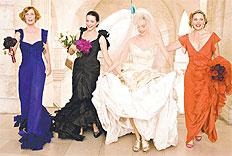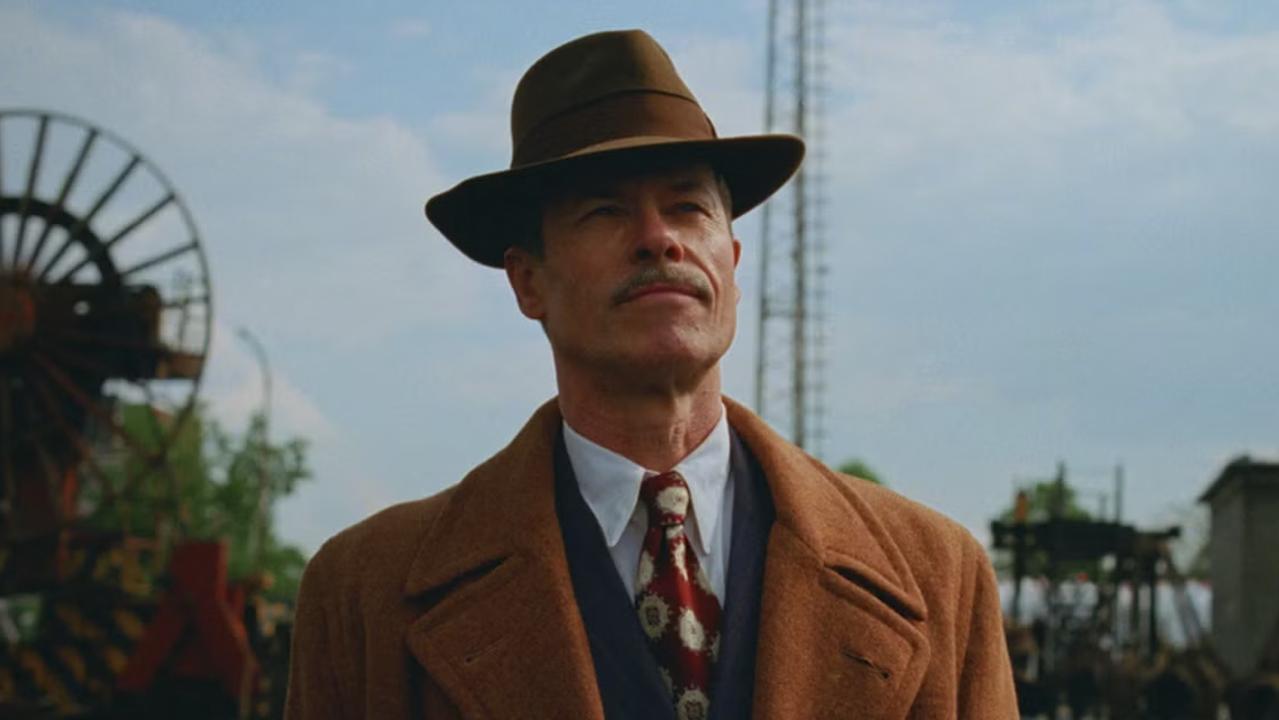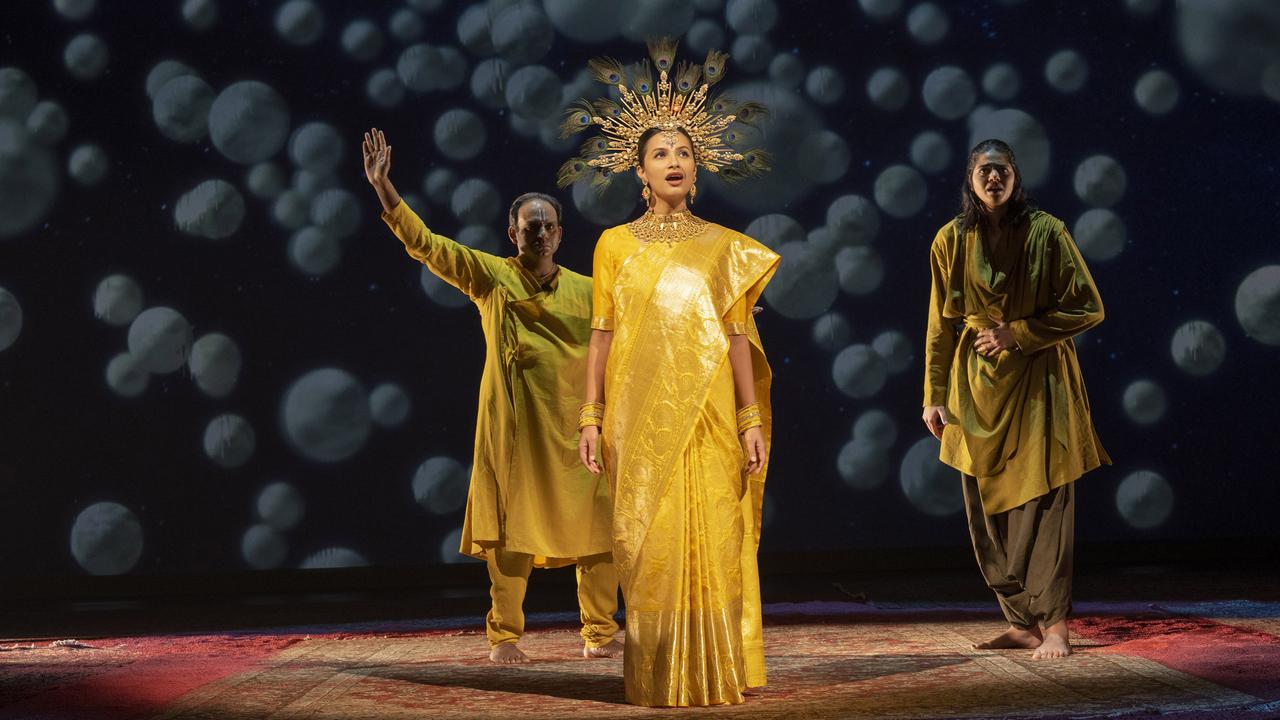Less sex, more city
ON the promotional trail for the new Sex and the City film, one of the leading ladies was in an unusually confessional mood.

ON the promotional trail for the new Sex and the City film, one of the leading ladies was in an unusually confessional mood.
Kim Cattrall admitted that back in the 1990s she had reservations about playing SATC's resident vamp, Samantha Jones. "I didn't think I was up to it," said Cattrall, who went on to turn Samantha into television's first female "trysexual" (she'd try anything once).
Now 51, Cattrall is still sashaying in front of the cameras as the libidinous Samantha in the big-screen version of the hit TV series, which is in cinemas here from June 5. As the film opens, Samantha is in a steady relationship with a gorgeous young actor, but she hasn't tamed her inner hussy: she is reportedly implicated in scenes involving nudity and sushi, and licking the icing off her cake at her 50th birthday bash.
It's well known that Hollywood often regards actresses over 40 as if they are radioactive. That Cattrall has maintained her status as SATC's maneater while in her sixth decade tells us something about the original show's impact (not to mention the miracles wrought by Botox and soft-focus lenses).
Ostensibly a romantic comedy about four heroines who scour Manhattan for lust, love and the right labels, SATC did more than introduce Manolos, modelisers and manthrax to the contemporary lexicon.
Broadcast between 1998 and 2004, it evolved from a fresh and frisky sitcom about modern mating rituals into a cultural phenomenon. As it explored sex, love and commitment (or rather, the lack of it) from a female point of view, it tapped into the desires and dilemmas of a generation that was the least likely to marry or have kids, and the most likely to divorce.
Like Seinfeld and Summer Heights High, SATC took the temperature of the times, morphing into one of those comedies that defined the confused values of an era without really meaning to. After all, the show is partly a fantasy, and the key characters represent a narrow demographic: wealthy, white New Yorkers who never wear the same outfit twice. Nevertheless, each embodies an archetype with whom different viewers can identify. Charlotte (Kristin Davis) is the prudish traditionalist; Miranda (Cynthia Nixon) is the cynical workaholic and overburdened working mother; Samantha (Cattrall) is the free-spirited, serial slut.
Sarah Jessica Parker's Carrie, the lead character, is a fusion of all three, embodying the modern women's conflicted search for a knight in shining Armani: in one episode, she vomits when she discovers that a new boyfriend, a genuinely nice guy, plans to propose to her. Yet for a decade she pursues an elusive tycoon (Mr Big), who will let her down, over and over again.
THE HIGH LIFE IN HIGH HEELS THE fifth character in Sex and the City is not Big. It's the wardrobe department.
Forget the international runways and fashion magazines. For the millions of women who tuned in to the television series, Sex and the City became arguably their biggest style influence.
The show encouraged women to swap conservative corporate wear and head-to-toe designer looks for more feminine, eclectic and vintage finds.
Women became more confident in the way they put a look together, and rediscovered the fun of fashion through the show that legitimised obsessing over Manolos (in one episode Carrie realises she has spent a Manhattan apartment deposit on shoes) as much as manhattans.
Sex and the City created a multitude of trends, including an appetite for Sarah Jessica Parker's "Carrie" nameplate necklace and the floppy fabric flower pins she wore. Sales of Carrie's beloved Manolo heels skyrocketed, with the result that designers and fashion houses lobbied show producers keenly for that all-important product placement. Florals, bold prints and bright colours were among the other trends created by the show, which cleverly created four very different style templates to which a diverse audience could relate.
Carrie is the diehard fashion follower, who changes her look as often as she changes her men (in the early episodes). In a frothy ballerina skirt, then hot pants, followed by a body-conscious bandage dress (and that's just in one day), she revelled in the transformative powers of fashion, and her fans followed accordingly.
Samantha favours power dressing in line with her job as a PR supremo (not to mention her voracious sexual appetite), translating to sharp-shouldered suits in bold colours. Charlotte channelled her inner-princess, choosing feminine looks in line with her waspy, Upper East Side perfectionism.
Miranda is the least fashion-minded of her three pals but her career-looking, androgynous style is probably the most do-able for everyday working girls.
In this era of the moving image, many women can relate more easily to a fashionable character in a film than a model in a magazine. When fashion is attached to a character with her own life and stories, it becomes easier to rationalise a $10,000 Dior dress for the way it enhances and defines her personality.
And the level of conspicuous consumption on the show was indeed extraordinary. Whether that wanton materialism is in line with today's more circumspect, conservative climate remains to be seen.
It has been four years since the end of the TV series, and the film is not just a comeback for Carrie, Miranda, Charlotte and Samantha, it's a revamp of their wardrobes. The four women have matured and made different life choices. What that means for the clothes remains to be seen, but with at least eight reported "promotional partnerships" with companies whose products appear in the film, it seems the fashion-fabulous allure of Carrie et al is still very, very big business.
Georgina Safe
Loosely based on newspaper columns by New York writer Candace Bushnell, SATC has been described as reactionary and revolutionary. It was both, often at the same time, and in a strange way, this tension between its radicalism and conservatism underpinned its success.
On the one hand, SATC made it OK to be female, single and promiscuous at 40. On the other, finding or keeping a man (or two, in Samantha's case) was as central to the lives of its late-20th century sexual adventurers as it was to any of Jane Austen's heroines.
Moreover, the romance between Carrie and Big that drove the story through six series and on to the big screen, is an old chestnut: the feisty singleton who breaks her heart attempting to win over the unattainable, romantic hero. In life, any woman who pursues a man who, like Big, is rich, handsome and terrified of commitment, is likely to end up as the wronged wife on the cover of Woman's Day. But in the movies, she gets to walk down the aisle in a Vivienne Westwood gown ... or does she? (The film's trailer hints at a wedding between Big and Carrie that goes terribly wrong.)
Four years after the TV series ended, you can take SATC vacation packages or hotspot tours of New York, get an SATC ringtone for your mobile, or buy a glossy magazine in Russia named after the show. Academics have lectured and written books on SATC, which The New York Times has described as "a sociological event" and "a cultural happening".
Early reviews of the film version have been lukewarm, yet its London premiere earlier this month generated media coverage from Katoomba to Kuwait. A Greater Union spokeswoman told Sydney's The Sunday Telegraph she had never seen such strong demand for advance tickets for a chick flick.
The SATC phenomenon seems to have seduced the pre-texting and post-feminist generations. I'm 45 and looking forward to seeing the film. So is my 22-year-old niece, who has helped organise a sold-out charity screening in Sydney.
Some feminists have argued that SATC was revolutionary in the way it took to new extremes sexual frankness from a female perspective. With risque titles such as Old Dogs, New Dicks, the sitcom explored anal sex, threesomes, impotence, and tantric sex, all conveyed through ribald one-liners you might expect at an all-male poker night. I often felt this had more to do with how men would like women to talk about sex, than with how women actually talk about sex. Marge Simpson's sister was spot on when she quipped that SATC was about "four straight women who act like gay men".
Interestingly, until she got breast cancer and a boyfriend, Samantha was the least authentic of the SATC glamazons, since nearly all her romantic liaisons ended approximately an hour after she climaxed.
It can also be argued that a show about four attractive women who are up for it all time, is a male fantasy masquerading as female sexual emancipation; a natural outgrowth of the West's raunch culture. Yet SATC made women over 35 not just sexy but sexually assertive, and it relentlessly objectified men.
The conveyor-belt male lovers who were processed through the early series were mercilessly sent up for kissing like Great Danes, for having penises that were too big or too small, for ejaculating too early, too late, or not at all.
An integral part of the SATC fantasy was an unending supply of blokes. For our heroines who revelled in high heels, the high life and sexual high jinks, three months without sex constituted a man drought. Another part of the fantasy was sex without consequences, namely STDs. Amazingly, Samantha, who once took an AIDS test, slept with scores of men without catching so much as a sniffle.
The show broke new ground in celebrating female friendship. This is still rare in film and TV, where women viewers are often starved of likeably flawed female protagonists whose lives reflect their own in some way.
It's true though, that Samantha, Carrie, Charlotte and Miranda met in ritzy bars, clubs and restaurants with a frequency that suggested they had no other demands on their time. Parents, children and grocery shopping rarely intruded on their social lives.
Nor did budgeting. Although Carrie doesn't work full-time, she has a stylish Upper East Side apartment and the wardrobe of a society queen. None of the SATC protagonists wore shoes you could run for the bus in (come to think of it, the SATC crew weren't big users of public transport). None of these women aged visibly or (pregnancies apart) gained a kilo over the show's six-year run. If anything, as she sat typing her relationships columns in her undies, Parker's stick-insect body seemed to get thinner as the seasons went by.
In presenting its female characters as underfed and overdressed -- they once went to a baseball game in fur coats -- SATC was about as radical as a Miss World contest.
Yet its influence was far-reaching enough for it to have inspired spin-offs and rip-offs. In 2005, Desperate Housewives became a ratings hit around the world with female leads who were over 40: this would have been unthinkable before SATC. This year, we've seen two other dramas crudely cut from the same cloth. Mistresses is a quasi-thriller from Britain in which thirtysomething women embark on illicit relationships, while Cashmere Mafia is an American drama about four New York women who juggle high-profile jobs with stressed home lives. Neither works, mostly because they are shamelessly derivative and lack SATC's lubricating wit and incisiveness.
Interestingly, by the end of TV series, the promiscuity on SATC had eased. Samantha was in a monogamous relationship with her boy toy, Charlotte had divorced and remarried, Miranda had shacked up with the father of her baby, and Carrie was back with Big. The show's creators were criticised for the inherent conservatism of all this tidy coupling, but there were commercial and dramatic imperatives here: the series rated best when its characters were in relationships and viewers had something to invest in emotionally.
For all its erotic shenanigans, it's ironic that SATC ultimately demonstrated the limitations of a story animated by quickie sex alone.



